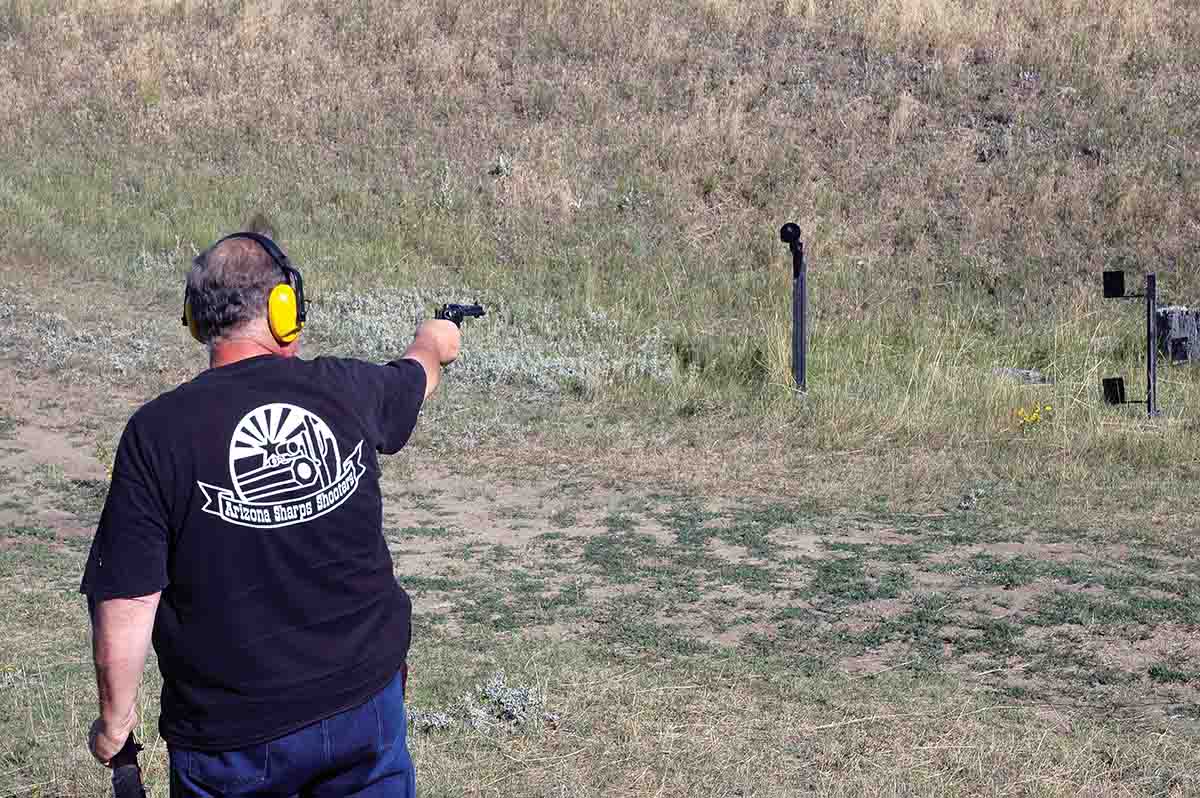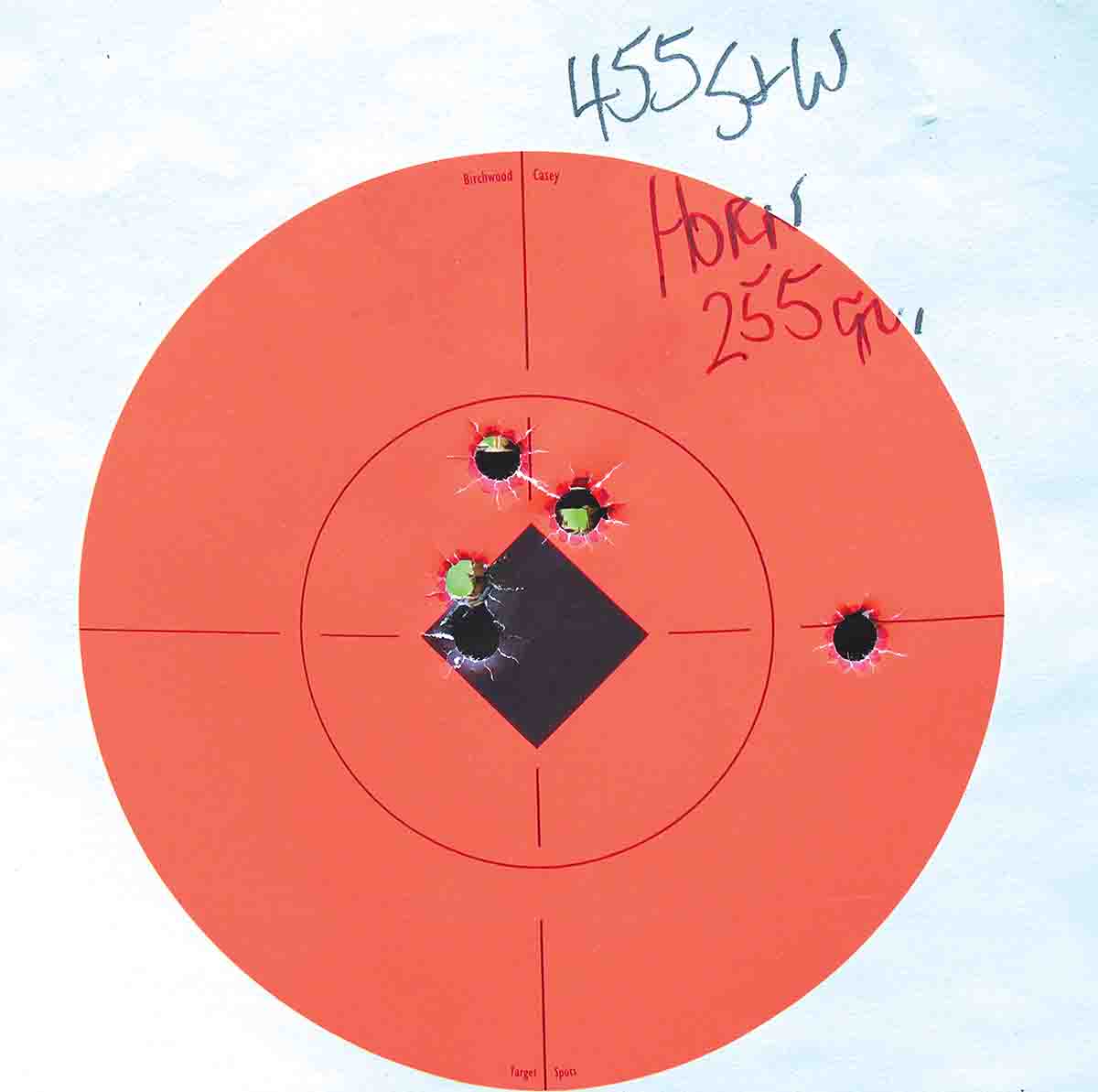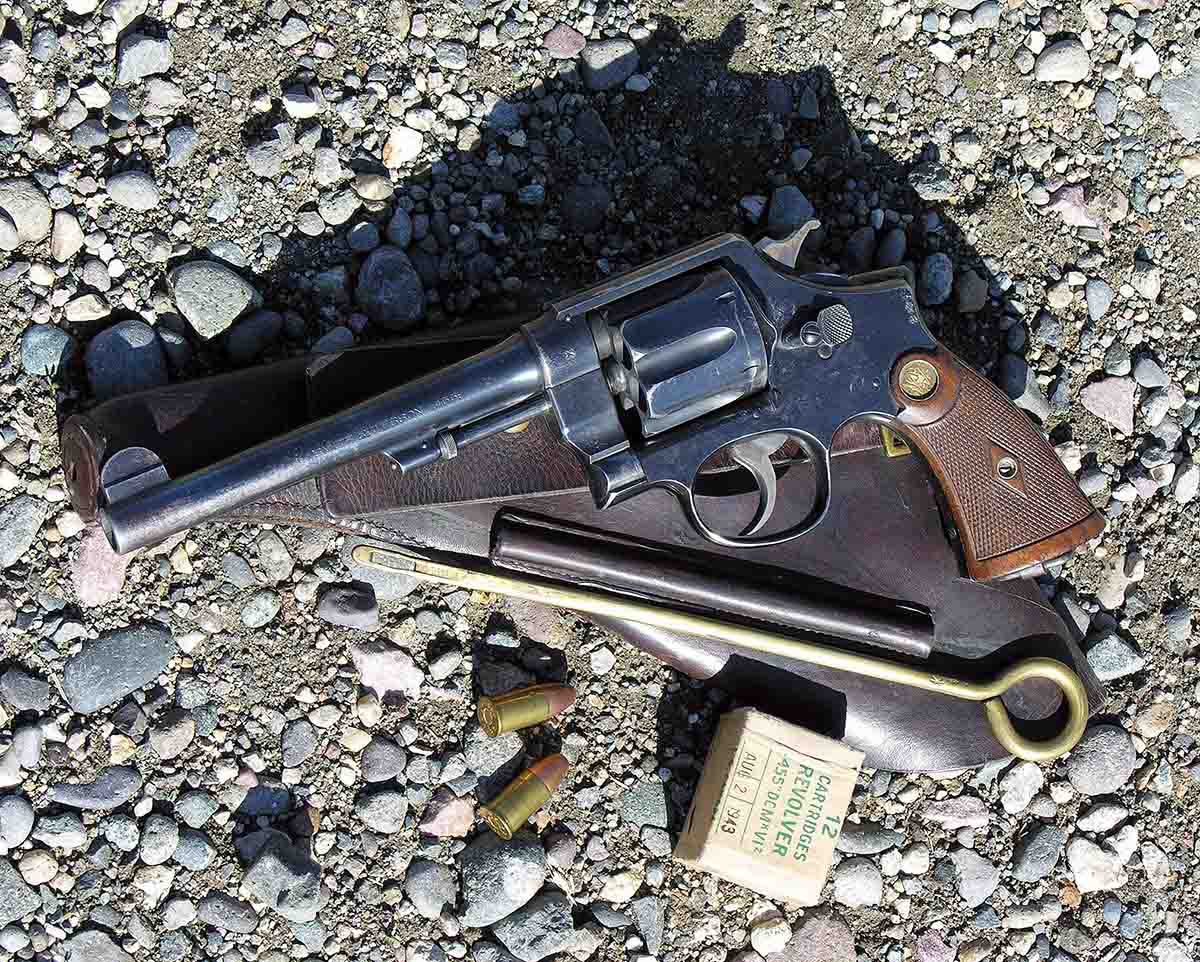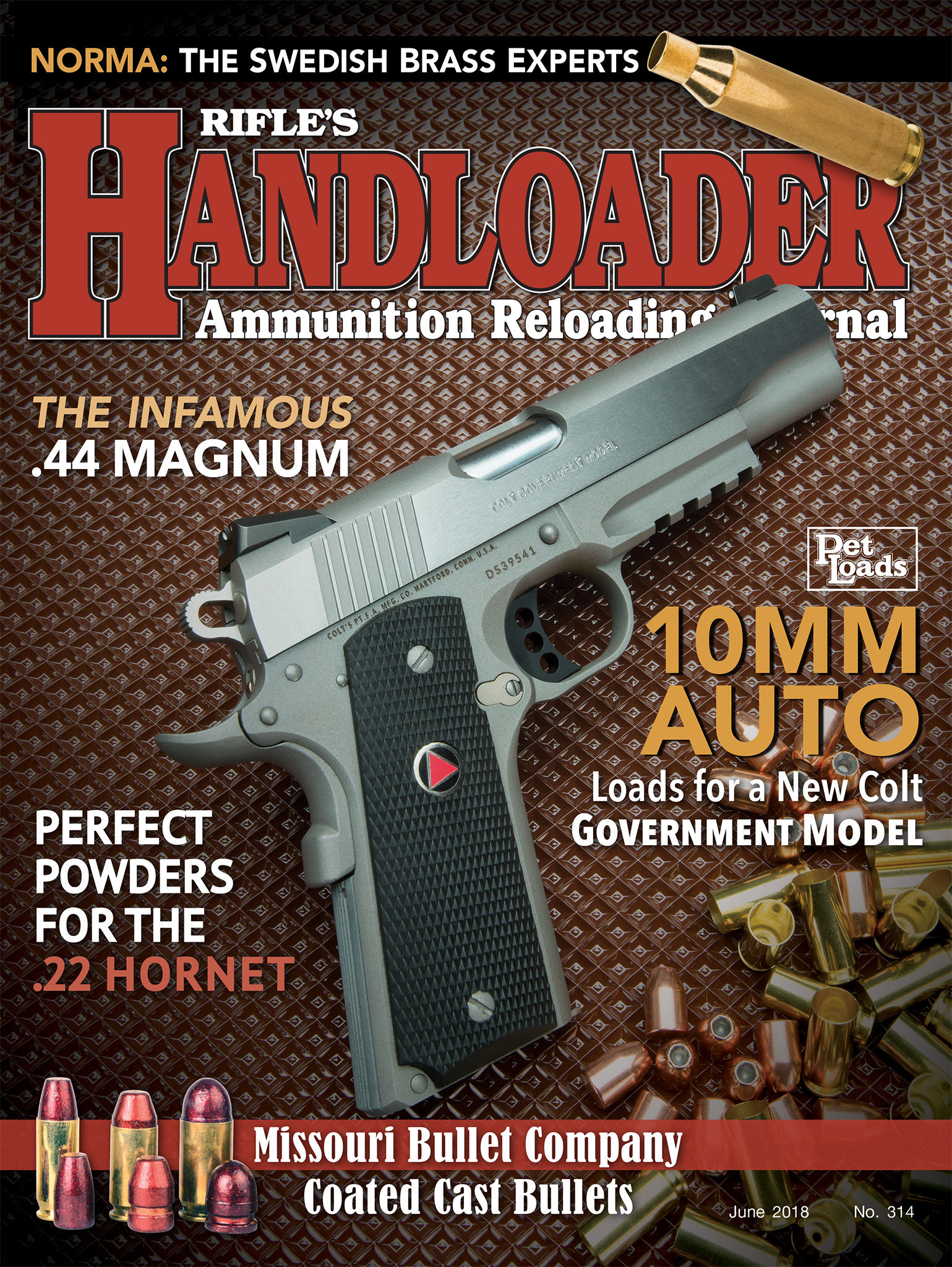Mike's Shootin' Shack
Zeroing Fixed-Sight Handguns
column By: Mike Venturino | June, 18
When do the fixed sights on a handgun need fixing? My opinion is this: When the shooter cannot aim directly at his chosen target, his fixed-sight handgun needs zeroing. Personally speaking, when shooting for relaxation instead of for an article, I often shoot at moving steel targets. My dueling tree has 4x6-inch paddles, and another more complex target has 6-inch diameter reciprocating paddles (hit one and the other pops

Out to 25 yards, if I can aim at a paddle’s bottom edge to hit its center, then I’m happy with the handgun’s zero. I am not so happy if I have to hold above a paddle’s center for elevation or more than a mite off center for windage. In that case, the fixed sights need “fixing.” Specifically, I want fixed-sight handguns to put their bullets no more than 2 to 3 inches above point of aim and closely centered laterally.
A natural question would be: “Why not just get handguns with adjustable sights?” That’s logical, and I do own some, but for some reason my psyche favors historical handguns ranging from cap-and-ball revolvers to many other types, including World War II-era examples. With any luck, such handguns will hit within the above mentioned parameters.
For instance, I have a Smith & Wesson Second Model Hand Ejector .455 Webley that factory letters to the Canadian Government in 1916. After trying a few powders and bullets, I settled on Hornady 255-grain swaged lead RN/FPs over 4.0 grains of Bullseye. The idea here was to try a small variety of handloads with ballistics similar to the military load for which this revolver was intended. Success came quickly.
On the other end of the spectrum was a Smith & Wesson Heavy Duty .38 intended for the high-pressure .38-44 factory loading introduced in 1930, (a .38 Special revolver built on Smith & Wesson’s large .44 N-frame.) The first Heavy Duty .38 I tried placed bullets about 9 inches from center in a 7 o’clock direction. A nonshooting collector got a good deal on that Smith & Wesson.

Therefore, let’s say someone has a fixed-sight .38 Special revolver that is shooting low with 125-grain bullets. That means it was likely made in the time frame when factories intended .38 Specials to use 158-grain factory loads. A handloader can probably correct his .38’s zero by going to 150- to 160-grain bullets. In extreme cases 170- to 200-grain bullets can be tried. If a revolver with fixed sights is shooting too low, then its sight can be filed, but this should be done at a range by someone familiar with filing sights; metal removed is forever gone.
Zeroing for windage is easy if a dovetailed front or rear sight is part of the picture, as it is for many semiautomatics. The sight can just be drifted for windage or its height changed as needed for elevation zeroing. Most modern semiautomatics come with adjustable sights. Historical variants are iffy. I have a John Inglis Hi-Power 9mm (Canadian) that has a dovetailed front sight. A Belgian FN Hi-Power made in the same year does not.
The windage problem can be more complicated with revolvers. Traditionally styled single actions such Colt SAAs, their many replicas and Ruger’s Vaqueros are easily adjusted. A gunsmith with a set of hardwood blocks and a vice can tweak a barrel in the revolver’s frame so the front sight tilts ever so slightly. A revolver that hits a few inches left can have the barrel tightened a pinch, so the sight leans left, resulting in groups moving to the right – and vice versa. Is loosening the barrel a problem? Not with the minor adjustment it would require to move the group center left.

There is an old saying: “Once sighted in, a fixed-sight handgun is forever sighted in.” Not quite. It must be used with ammunition for which it was mated, or the zeroing process will have to be repeated; not to mention how it might be fired during the sighting-in process; handheld or with a benchrest. Point of impact may vary between the two methods.


